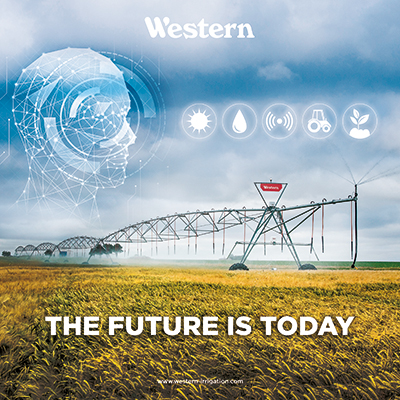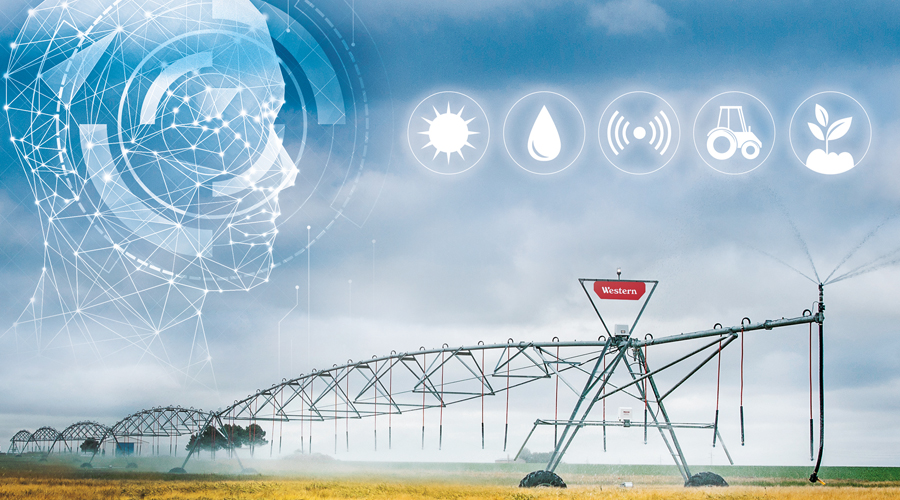
Are you ready for the Artificial Intelligence in Ag?
Artificial Intelligence “AI” means the demonstration of intelligence by machines. AI was founded as an academic discipline in 1956, and business felt it when early computers gave retailers the power to order sales data on an unprecedented scale.
AI has become more useful for most companies during the last 10 years when lower-cost computational power and more sophisticated algorithms intersected with the vast data sets that could be harvested from the internet and other resources.
Talking about AI field, it includes General Artificial Intelligence when simulating human -level cognition in taking complex decisions in varying contexts. Singularity when machines powered by AI will be able to surpass all human intelligence. Narrow Artificial Intelligence which is applied to a single defined task such as language translation. Machine Learning when computers are able to detect patterns and make predictions and recommendations or prescriptive based on algorithm that learns from data or experience.
Machine Learning has different types of algorithm such as supervised and unsupervised learning, Neural Networks, Robotics and Natural Language Processing, based on the type of data, inputs and required outputs, (IESE-2018).
AI in Agricultural
In the agriculture sector the world’s population is expected to grow to almost 9 billion by mid-century and may peak at more than 11 billion by the end of the century. To meet demand, agriculture will need to produce almost 50 percent more food in some areas of the world while in sub-Saharan Africa and South Asia, agricultural output would need to more than double by 2050 to meet increased demand. In the rest of the world the projected increase would be about one-third above current levels, (FAO & UN).
The traditional way of managing cultivation, irrigation and fertigation versus water scarcities and soil depletion cannot deliver sustainable food and agricultural production. What is needed are innovative systems that protect and enhance the natural resource base, while increasing productivity. Also needed is a new standard that should be followed to overcome such challenges, so the Agriculture 4.0 is suggested.
Agriculture 4.0 will no longer depend on applying water, fertilizers, and pesticides uniformly across AI in Agricultural
In the agriculture sector the world’s population is expected to grow to almost 9 billion by mid-century and may peak at more than 11 billion by the end of the century. To meet demand, agriculture will need to produce almost 50 percent more food in some areas of the world while in sub-Saharan Africa and South Asia, agricultural output would need to more than double by 2050 to meet increased demand. In the rest of the world the projected increase would be about one-third above current levels, (FAO & UN).
The traditional way of managing cultivation, irrigation and fertigation versus water scarcities and soil depletion cannot deliver sustainable food and agricultural production. What is needed are innovative systems that protect and enhance the natural resource base, while increasing productivity. Also needed is a new standard that should be followed to overcome such challenges, so the Agriculture 4.0 is suggested.
Agriculture 4.0 will no longer depend on applying water, fertilizers, and pesticides uniformly across entire fields. Instead, farmers will use the minimum quantities required and target very specific areas. It will be possible to grow crops in arid areas, making use of abundant and clean resources such as the sun and seawater, (World Government Summit).
Farms and agricultural operations will have to be run very differently, primarily due to advancements in technology such as sensors, devices, machines, and information technology. Farmers need to use sophisticated technologies such as robots, temperature and moisture sensors, aerial images, and GPS technology. These advanced devices and precision agriculture and robotic systems will allow farms to be more profitable, efficient, safe, and environmentally friendly.

As much as precision agriculture (PA) becomes bigger and farms become more connected in the coming years, efficiency and productivity will increase consequently. It’s estimated that by 2020, over 75 million agricultural Internet of Things “IoT” devices will be in use: the average farm will generate 4.1 million data points daily in 2050, up from 190,000 in 2014.
For this reason, agricultural technology startups have grown more than 80 percent per year since 2012. Besides this, private investment in R&D increased from US$12.9 billion in 1994 to US$18.2 billion in 2008 (Beintema et al., 2012). Global private investment in R&D in agriculture and food processing accounted for about 21 percent of total R&D expenditures in 2008.
Digitalization of Agriculture
The Industry 4.0 trend is seen as a transformative force that will deeply impact the industry. The trend is building on an array of digital technologies: Internet of Things “IoT”, Big Data, Artificial Intelligence, and of digital practices: cooperation, mobility, open innovation. Beyond the introduction of new tools and practices, the real promise of Agriculture 4.0 in terms of productivity increase resides in the ability to remotely collect, use, and exchange data.
Challenges to adoption
The development of Agriculture 4.0 requires technological standards to ensure the compatibility of equipment. Indeed, given the lifespan of agricultural equipment, standards are a necessity to ensure that any technological choice remains interoperable with newer equipment and is supported over time by the manufacturers and other industrial.
The new challenge of Agriculture 4.0 is the need to have data exchange and communication standards that link the different systems together in a unified system covering all aspects of the agricultural exploitation. The Agriculture Electronics Foundation (AEF) is providing a framework for the cooperation of all interested parties under the leadership of the core members whilst maintaining competition among all members. The AEF supports standardization organizations such as the International Standards Organization (ISO). Another essential challenge in the adoption of Agriculture 4.0 is the ability of farmers to invest and to modernize their practices of production. Finally, another important challenge in the adoption of the IoT in agriculture is the development of communication infrastructures in rural areas. Current wireless communication networks have been deployed with a B2C focus, having a strong emphasis on urban areas.
As we have seen, the ability to exchange and analyze data (often at the platform level) is key to the success of Agriculture 4.0. Thus, communication networks will have to be developed in rural areas.
Are you in or out?
Ongoing efforts are running from many agricultural manufacturers to produce equipment equipped with new devices for monitoring and managing the equipment remotely and to send its updated status and log information to the cloud in order to get analyzed and recommend to the farmers better farming management.
There are different products that have already released and available in the markets using GPS technology such as self-steering tractors and its implements. Another example is the mechanized irrigation systems such as center pivot which equipped with GPS heading option, allowing farmers to irrigate different sectors cultivated by different crops and also switching on EndGuns in the corners of the field.
On the same regard, Alkhorayef Irrigation Solutions (AIS) invested during the last four years on developing the iControl family, including iControlRemote for pivot, iControlPump and iControlTotal for remotely monitored and controlled pivots, pumps and solid set systems.
The 3G version of iControlRemote is released with wide range of features and options addition to its very friendly use. The data is transferred to the cloud either by using GSM or wireless radio. Farmers can monitor and manage the different type of the irrigation systems in their farm remotely to do better irrigation management and increase the return on investment.


